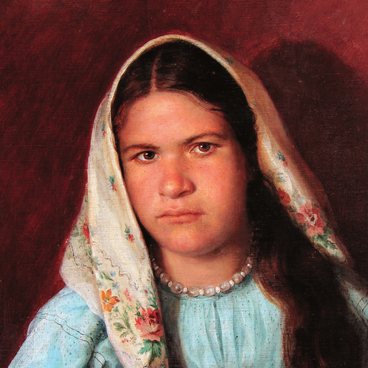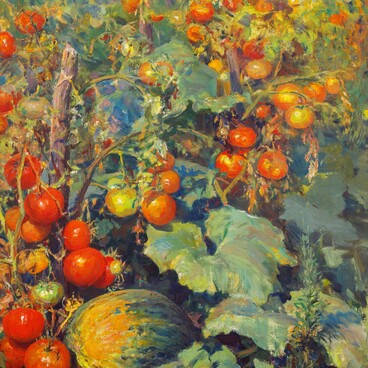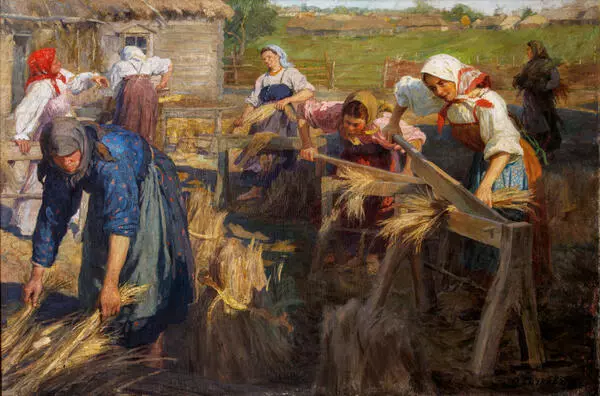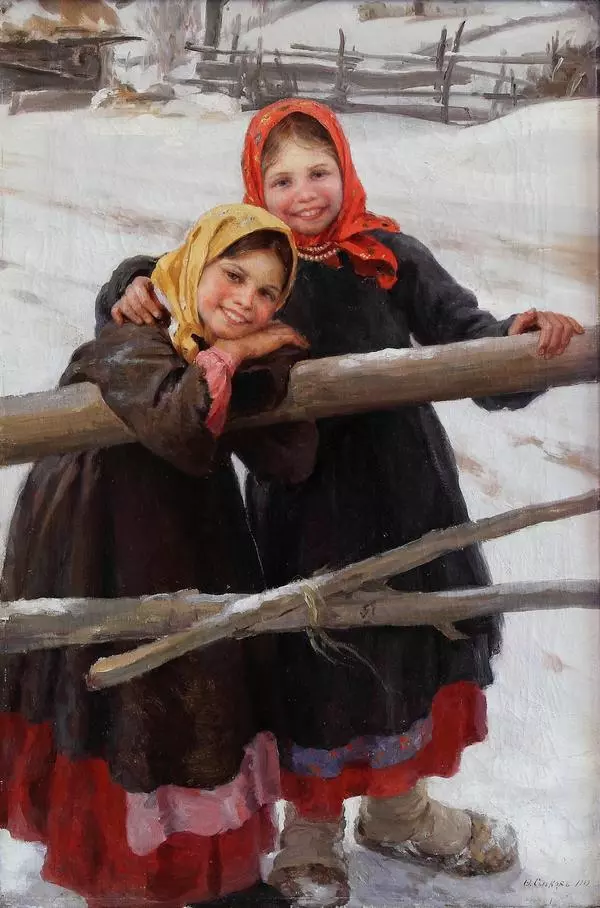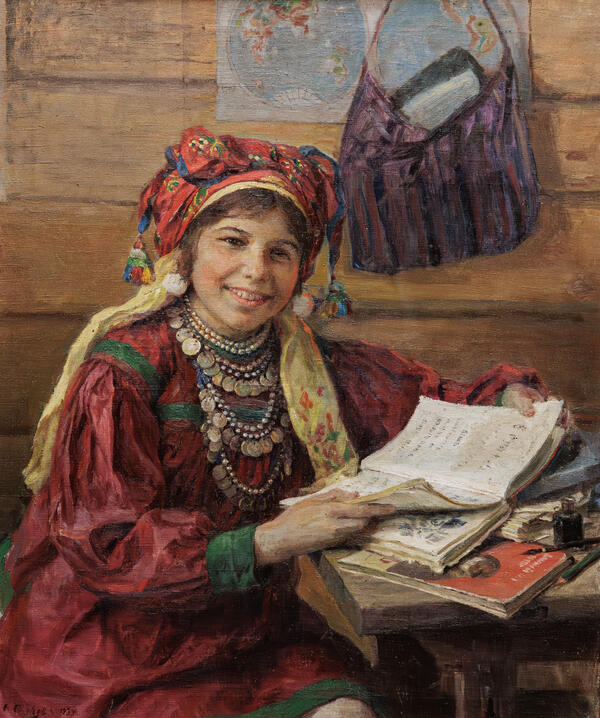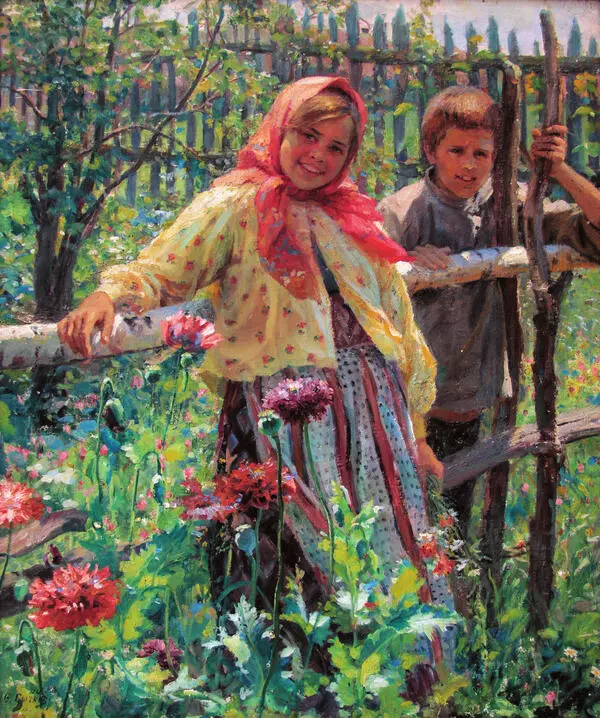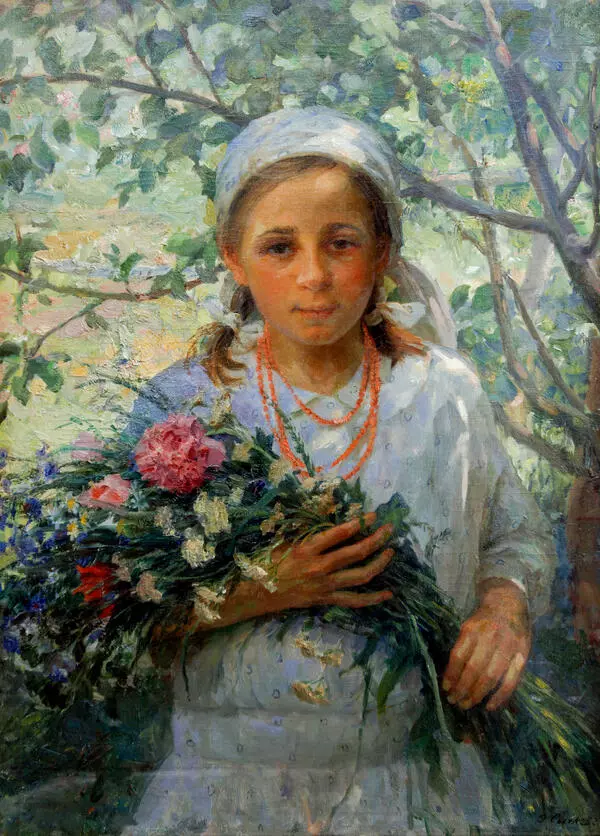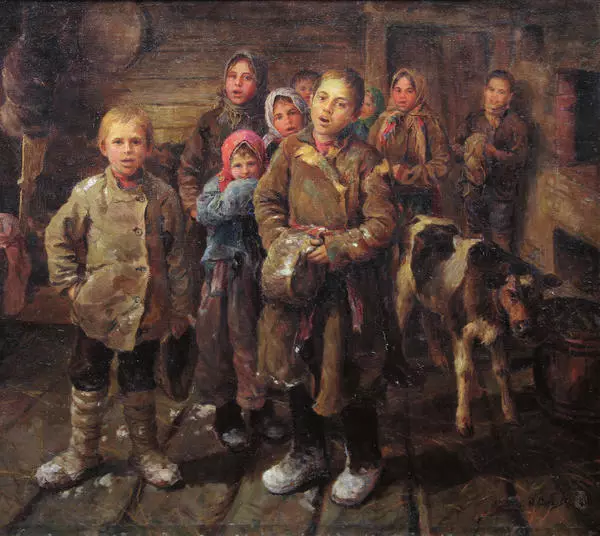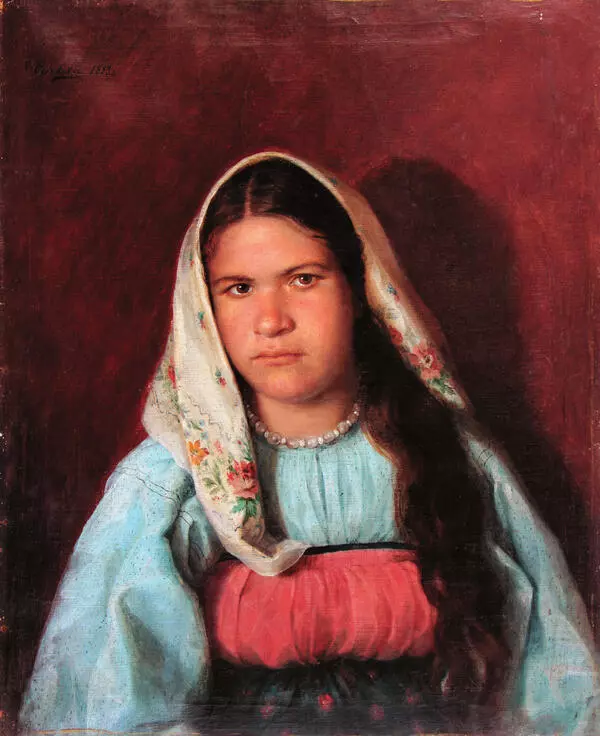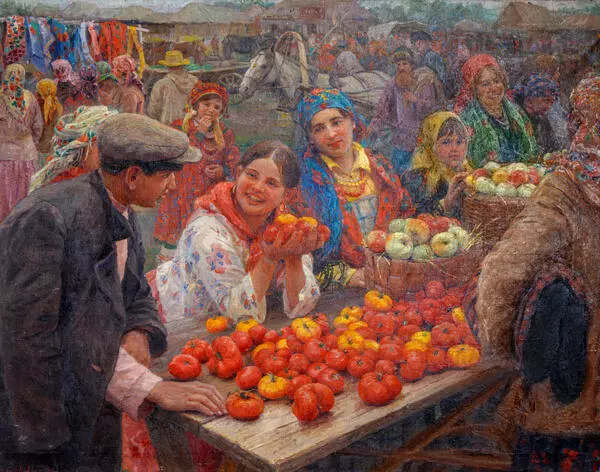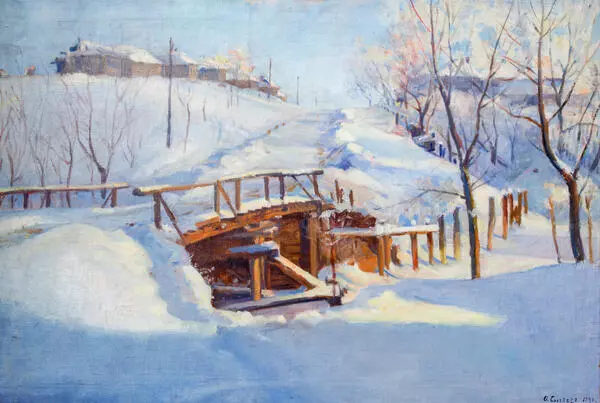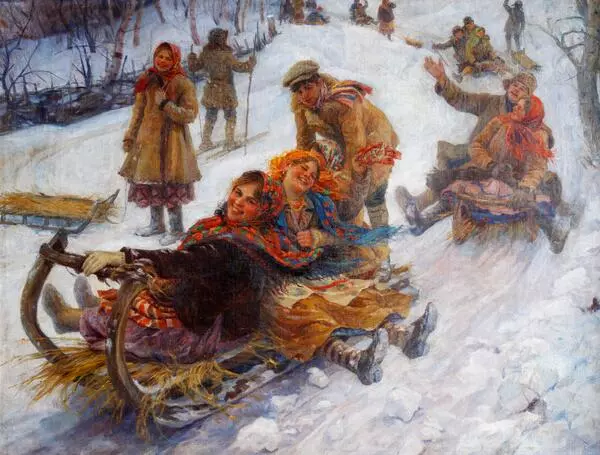Fedot Sychkov created the ‘Portrait of Alexandra Dmitrievna Pel (Woman in a White Dress)’ during 1913-1915. He depicted a girl in a light dress of a simple cut with delicate lace. The artist focused the attention on the slightly upturned face of the heroine. He especially emphasized the flaming blush on her cheeks, the slightly parted sensual lips and the flirtatious dimple on her chin. He created soft transitions of light and shadow, carefully shading the contours; the light glides as if tangled in her golden curly hair. Due to such minute details, the girl looks especially tender.
Alexandra Pel was the daughter of Dmitri Pel, a principal of the Kochelayevo rural school. A captured Frenchman who settled in Russia after the Patriotic War of 1812 was one of their ancestors — it was his surname that the family bore. At the beginning of the 20th century, Shurochka (as the girl was called by her relatives) graduated from the Penza Gymnasium and returned to Kochelayevo. There, she was surrounded by like-minded people — local teachers and residents who were not indifferent to art. The Sychkov family willingly and with extraordinary kindness hosted the cheerful girl with a rich inner world. The commonality of their interests, their shared love for music, literature, and painting made these meetings brighter and more fruitful.
Fedot Sychkov painted Shurochka more than once: in 1913 — ‘Shura’s Head’ and ‘In a Blooming Garden’; as well as in 1934 — ‘Kolkhoz Market’. The 1914 paintings ‘Riding on Maslenitsa’ and ‘The Head in Red’ were printed on postcards by the publishing house ‘Richard’ (the latter was published under the title ‘Blonde Coquette’). Four of the listed artworks are displayed in the museum. The fate of the original painting ‘Riding on Maslenitsa’, unfortunately, is unknown.
Among other portraits, this particular one was especially dear to Shurochka: Alexandra Pel never parted with it, despite any life circumstances. It reminded her of her happy youth in her native Kochelayevo and of her encounter with an artist who managed to convey the feelings that overwhelmed her. Until recently, the portrait belonged to her son, collector Alexander Pel-Dmitriev, and in 2010 it became part of the museum collection.
Alexandra Pel was the daughter of Dmitri Pel, a principal of the Kochelayevo rural school. A captured Frenchman who settled in Russia after the Patriotic War of 1812 was one of their ancestors — it was his surname that the family bore. At the beginning of the 20th century, Shurochka (as the girl was called by her relatives) graduated from the Penza Gymnasium and returned to Kochelayevo. There, she was surrounded by like-minded people — local teachers and residents who were not indifferent to art. The Sychkov family willingly and with extraordinary kindness hosted the cheerful girl with a rich inner world. The commonality of their interests, their shared love for music, literature, and painting made these meetings brighter and more fruitful.
Fedot Sychkov painted Shurochka more than once: in 1913 — ‘Shura’s Head’ and ‘In a Blooming Garden’; as well as in 1934 — ‘Kolkhoz Market’. The 1914 paintings ‘Riding on Maslenitsa’ and ‘The Head in Red’ were printed on postcards by the publishing house ‘Richard’ (the latter was published under the title ‘Blonde Coquette’). Four of the listed artworks are displayed in the museum. The fate of the original painting ‘Riding on Maslenitsa’, unfortunately, is unknown.
Among other portraits, this particular one was especially dear to Shurochka: Alexandra Pel never parted with it, despite any life circumstances. It reminded her of her happy youth in her native Kochelayevo and of her encounter with an artist who managed to convey the feelings that overwhelmed her. Until recently, the portrait belonged to her son, collector Alexander Pel-Dmitriev, and in 2010 it became part of the museum collection.
